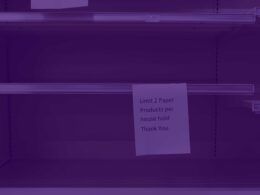That is, until Birchbox came along in 2010 with an innovative offer: Pay a monthly fee and receive a curated box of beauty samples by mail.
“They said, ‘We’re going to start off doing this one part of the customer value chain, which is helping you identify the better products, and we’re going to do it more conveniently,’” says Thales S. Teixeira, author of the new book Unlocking the Customer Value Chain: How Decoupling Drives Consumer Disruption, which debuts tomorrow.
“INCUMBENTS TEND TO RESPOND TO DECOUPLING BY GLUING BACK THE PART OF THE VALUE CHAIN THAT WAS BROKEN.”
Many established companies lament the disruption they’re facing at the hand of technologically savvy startups. But Teixeira, the Lumry Family Associate Professor of Business Administration, argues that these newcomers simply spotted and served an emerging customer need faster, taking market share from established companies that didn’t see them coming.
Are companies looking at disruption the wrong way?
Danielle Kost: In your book, you argue that technology isn’t the main force hobbling many companies today—it’s changing customer needs and behavior. How did you come to this conclusion?
Thales Teixeira: When I started eight years ago looking into what was going on in certain industries, what came out initially was this idea that it was technology, right? We all talked about Google, Amazon, Facebook, and Apple. But in many industries, both the disrupter and the disrupted had similar technologies and similar amounts of technology.
The common pattern was that the majority of customers in those markets had changing needs and wants, and their behavior was changing.
Kost: Many of the companies you’ve studied gained a foothold in the market by capturing one piece of the customer value chain, or by following the steps a customer takes to select, buy, and consume a product or service. You call these situations “decoupling.” Could you give an example?
Teixeira: A great example of decoupling is an insurance startup called Trov. It’s an app that allows you to quickly insure expensive belongings for short periods of time. If you’re traveling to Rio de Janeiro next week and you just bought a $700 camera that you fear you’ll lose, you can upload some information about the camera to the Trov app, swipe right, and insure it from the moment you embark. One week later, when you come back, you can swipe left and it will stop insuring it.
You don’t have to do all the activities you normally would do with a traditional insurance company. You don’t have to talk to an agent, look at the policies, list the things you own, pay for the policy, use it, and then cancel it.
[Most] insurance companies don’t want to sell you one week of insurance for one product. They have thousands of employees, big budgets, and huge infrastructures, so that they can offer more or all of the activities in the customer value chain.
Kost: Incumbents that survive disruption often embrace it and change their business models to forge new sales channels, revenue streams, and customer segments. Could you give an example?
Teixeira: Incumbents tend to respond to decoupling by gluing back the part of the value chain that was broken. The other alternative is you just live with the fact that it’s broken. That’s called “preemptively decoupling.” Instead of waiting to be disrupted, you just break it.
When Amazon started selling electronics online, it created apps that encouraged customers to go to a store and check out the prices and products, but order them at Amazon. This is called showrooming.
Best Buy initially tried to prevent customers from showrooming. They considered changing the barcodes on products to make them hard to search for online. The company even tried to use signal jammers, like the ones they use to keep prison inmates from using cell phones.
Eventually Best Buy executives realized that Amazon and showrooming are not going away. They decided to charge manufacturers for putting those items on the shelf. When a company like Samsung puts TVs on display at Best Buy, Samsung is benefiting whether you buy it from Best Buy or Amazon. So Best Buy decided to charge for that value they create.
Kost: Many companies obsess about their direct competitors—how to undercut their prices, outpace them in R&D, or steal their talent. You argue that companies should focus on customers and meeting their needs. Why is that so hard?
Teixeira: You have few competitors, so it’s easy to look at what they’re doing and emulate or respond. When Coca-Cola launches a new product or reduces prices, it’s easy for Pepsi to identify that. It’s easy to go to the board or to your boss and say, “Our competitor is doing this. We should respond.”
It’s very hard to understand your customers because you might have millions of them scattered around the world. It’s hard to see what they’re doing and to understand why they are doing what they’re doing.
“IN MOST CASES, CONSUMERS ARE DISRUPTING MARKETS, NOT STARTUPS AND NOT TECHNOLOGY.”
Kost: So many executives are trying to predict the next wave of disruption. You recommend that executives look for early signs of behavior change in seven consumer categories. Why?
Teixeira: When I started doing this research, I realized that 90 to 97 percent of consumer spending is concentrated in seven categories. I call them the categories that better consumers, from their point of view: where they live, what they eat, what they wear, how they move, how they heal themselves, how they educate themselves, and how they entertain themselves.
When consumers change their behavior, the first signs can be seen in one of these seven industries, and it quickly multiplies.
Kost: What lessons do you hope executives will take from your book?
Teixeira: That the game has changed. In the past, there were a few big companies competing with each other. Coke versus Pepsi. Airbus versus Boeing. GE and Siemens. Now there are thousands of startups in any market, and they’re competing with the big companies without having the resources.
But in most cases, consumers are disrupting markets, not startups and not technology. Your way out as a business executive requires adapting and evolving your business model.
Danielle Kost is senior editor of Harvard Business School Working Knowledge.
This article originally appeared in Harvard Business School WORKING KNOWLEDGE. Photo by Jonathan Safa on Unsplash.













